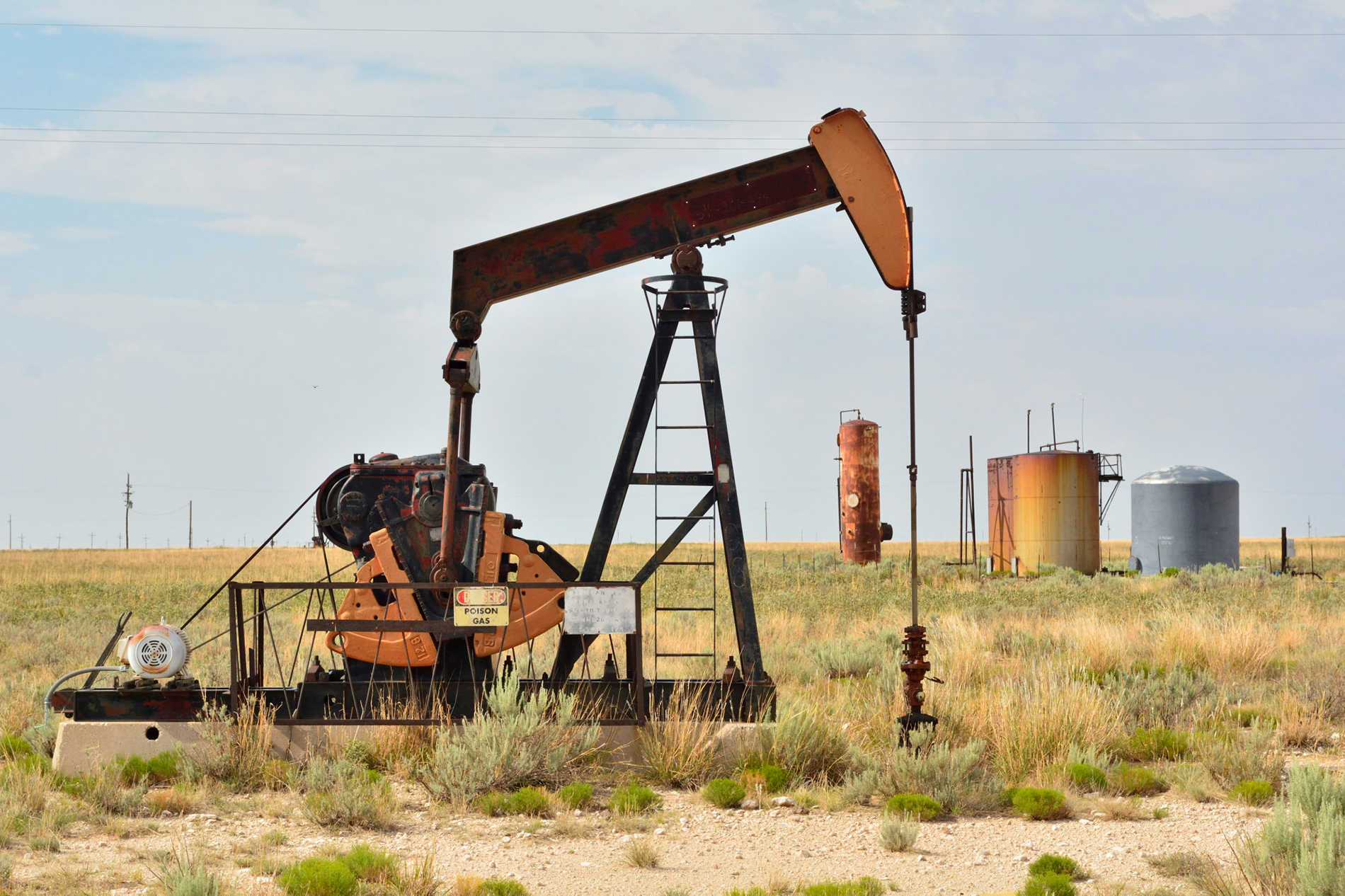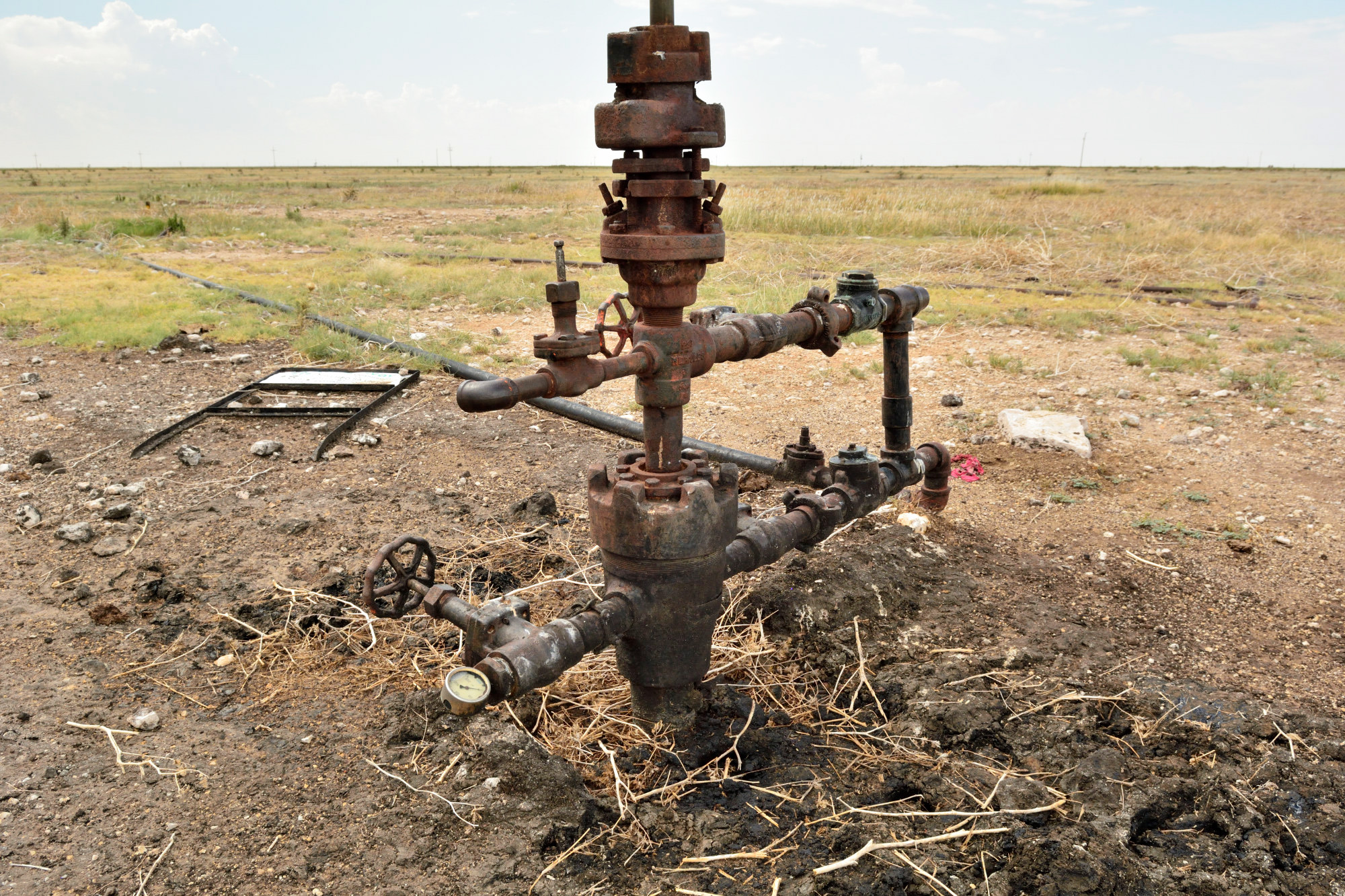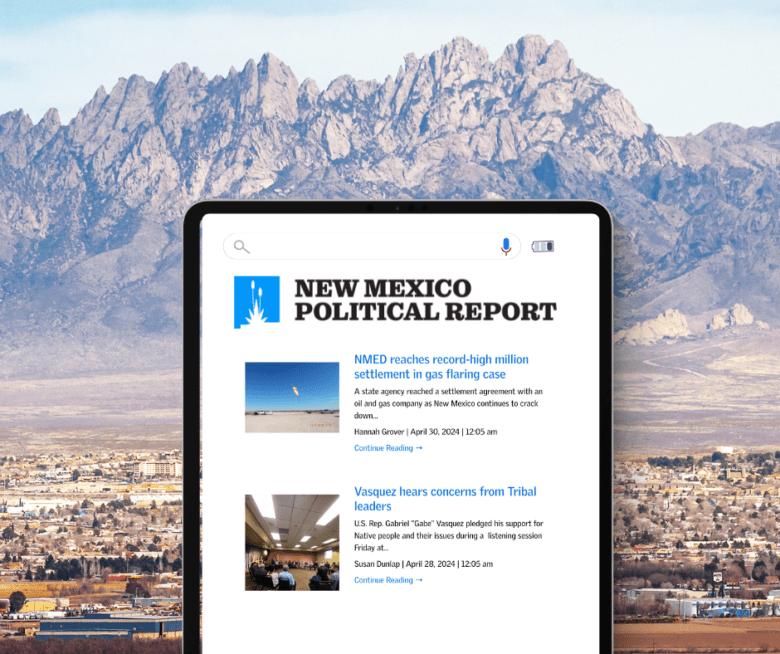Back in 2020, as oil and gas prices tanked because of the COVID crisis, New Mexico implemented an emergency program that would allow oil and gas producers to temporarily stop production and shut down wells for up to three years without penalty. The state’s Oil Conservation Division (OCD) created the program so that companies could bank petroleum reserves until prices rebounded — a move that would preserve profits for the companies and safeguard future tax revenue from the state’s largest single stream.
Understandably, the program proved popular and, at its peak, 34 companies idled 6,505 wells — roughly 12% of the state’s total number of active facilities. As energy prices rebounded and then soared into record territory in the last year, most of those idled wells returned to producing fuel and tax revenue.
But not all. According to OCD director Adrienne Sandoval, as of Aug. 2, 1,061 wells remain in the emergency program under Agreed Consent Orders (ACO) – legal documents used to bring non-compliant wells back into compliance. And a list of participating wells provided by her office shows the majority of those probably should have been plugged long ago.
The longer a well stays offline, the greater the likelihood of a casing failure or other leak that wastes the oil or gas and can foul groundwater, make people sick and/or damage the environment. So OCD rules flag a well as inactive if it hasn’t produced oil or gas for 15 months or more. Those rules allow operators very few inactive wells — a sliding scale permits two such wells for operators with fewer than 100 wells and tops out at 10 inactive wells for operators with 1,000 or more.
For inactive wells beyond the limit, a company must either get them running, plug them or apply for temporary abandonment status. OCD can order companies to plug inactive wells if they do not comply with the rules but, Sandoval says, “Enforcement actions are discretionary and depend on available resources; there is not an automatic trigger.
OCD tracks (among many other things) both well status and the last date a well produced any oil or gas. But the COVID program records highlight an uncomfortable truth: More than 950 wells in the program and labeled either “active” or “temporary abandonment” weren’t producing oil or gas when the program went into effect in April 2020. Of those, 582 hadn’t produced for 15 months or more before the program, and arguably shouldn’t have been admitted in the first place. Many haven’t produced oil or gas in years. A couple haven’t produced a lick in four decades.
“If those existing, shut-in wells aren’t actually capable of producing oil and gas economically, given the current demand and price dynamics, it’s really hard to see how they ever will,” says Erik Schlenker-Goodrich, executive director of the Western Environmental Law Center (WELC).
Sandoval defends the program. “OCD responded to an unprecedented situation with the best information that it had at the time,” she says. “In large part the data shows that this program has worked as intended: More than 80% of the wells covered by the ACOs have already been returned to production.”
But some companies appear to be exploiting the COVID program as a three-year deferral on environmental expenses. Plugging and remediation are expensive, and can cost upwards of $100,000 per well. But participants aren’t just enjoying a holiday from those costs. Postponing plugging allows those wells to languish, often untended and unsupervised, leading to leaks and increasing greenhouse gas emissions. No one can really say just how severe the unmeasured environmental impact may be.

The well named Jennifer Chaveroo #28 last produced oil in 2014. The nearby tanks are marked “Ridgeway Arizona” but do not show up on the New Mexico Oil Conservation Division’s database of well equipment.
To be clear, many of the biggest names in the oil and gas industry — Chevron, EOG, ExxonMobil — took part in the program, and those companies have turned on nearly all of their wells. In those cases, as Sandoval says, the program has worked as planned. It’s just a few producers that stick out like sore thumbs to anyone looking closely at the program data. Most notably, two companies — Ridgeway Arizona and EOR Operating Co. — own more than a quarter of all wells remaining on the list, and both are subsidiaries of a small company with a notorious CEO.
Russian-born American citizen Simon Kukes heads Pedevco, a Houston-based oil and gas firm that runs Ridgeway and EOR, as well as another small producer in Colorado. Kukes gained notoriety in the early 2000s when Vladimir Putin appointed him to run the Russian firm Yukos Oil after Putin seized the company’s assets and chucked its previous CEO — voluble critic Mikhail Khodorkovsky — in prison. Kukes reemerged in the news as a major donor to Donald Trump’s 2016 presidential campaign, bragging to a Kremlin official of his access to Trump’s inner circle and campaign organization.
In New Mexico, Ridgeway owns more nonproducing wells labeled “active” than any other company. The next two largest owners of nonproducing wells are bankrupt. It’s not clear why such a knowledgeable and well-connected oil and gas player as Kukes would end up with so many unproductive wells. But it is clear that a program created to protect the state’s petroleum resources from the economic fallout of the pandemic has had unintended consequences.
* * *
Silence leaves the biggest impression in an oilfield.
Nearly all of Pedevco’s wells operated by Ridgeway Arizona sit in the Chaveroo Oil Field, a mix of private, state and federal lands between Roswell and Clovis at the far north end of the Permian Basin in New Mexico. Here, few human noises interrupt the boom of distant thunder and murmuring wind across an ocean of scrub grass. About 700 wells spread in an east-west grid across a landscape that rolls just enough to keep one from seeing more than a few wells at a time, and most of those wells aren’t doing anything. In fact, many of those wells haven’t done anything for years.
It’s a sharp contrast to the San Juan Basin in northern New Mexico, where massive diesel generators roar and drive the wells that suck up and separate the gas and oil from pools miles below ground. In the southern reach of the Permian Basin, roaring diesels mix with nodding donkey wells that whirr and clank 24 hours a day, and their plastic gathering pipes gurgle with hydrocarbons. But here, at the Chaveroo Oil Field in the northern Permian, there is just wind and silence and the apparent signs of longtime disuse and disrepair.
It takes a while to see the Chaveroo field and its wells, since many of the access roads are overgrown and unmaintained. In the state’s other oil- and gas-producing areas, white, full-sized company trucks with their cattail-like radio antennas make the rounds, like remoras tending sharks. They tear about, sending up plumes of dust and keeping roads clear of weeds. Over the course of five hours on a recent weekday spent driving through the Chaveroo field, there were no other vehicles, no dust plumes and no other people seen across its 60,000 acres.
This despite the fact that the state’s primary oil and gas regulatory agency lists half of the 700 wells here as still “active.” In places, some wells do bob — but most don’t. Rust covers motionless “active” pumpjacks, and congealed oil cakes “active” wellheads that haven’t produced anything since 2018. Or 1998. Or even 1982 — the last production date for one “active” well in this field. Black scabs of lumpy tar spread out from old tanks and wells drilled in the Johnson administration, as heavy, dizzying whiffs of raw hydrocarbons from unseen leaks roll across the sage, providing the primary clue that this oilfield still produces something.
Ridgeway Arizona operates 302 “active” and “new” oil and gas wells here, according to records kept by the OCD, and they constitute Pedevco’s biggest holding. Another 11 active wells to the east, some waste injection wells and several dozen plugged and abandoned wells round out Ridgeway’s collection.

The oil well named Jennifer Chaveroo #23, owned by Ridgeway Arizona, last produced oil in 1982, even though it is marked as “active” on the New Mexico Oil Conservation Division’s database.
But according to those same OCD records, only 31 of Ridgeway’s active oil and gas wells have produced anything in the past 15 months, which would put the whole company out of compliance with the state’s oil and gas production rules, if it weren’t in the COVID program.
Wells operated by EOR, Pedevco’s other New Mexico holding, sit a few miles away to the southeast. According to the OCD, of 40 “active” wells, only seven currently produce any oil. One “active” well last produced oil 22 years ago.
“OCD agrees that Ridgeway Arizona appears to have the largest number of wells still covered by the [COVID program] and that some of those wells have not produced for some time,” says Sandoval, the OCD director. She says that no matter the operator, all wells need to be “dealt with” before the end of the program. “Otherwise, the operator could immediately be out of compliance,” she says, “including being subject to daily stipulated penalties.”
When asked why wells that hadn’t produced for years before the pandemic were allowed in the program in the first place, Sandoval says the program “was designed to respond to a range of circumstances and cover operations comprehensively.” However, “The OCD is not in a position to comment on compliance status of individual companies or wells [but] we are undertaking some reviews.”
* * *
Ridgeway isn’t alone in having hundreds of “active” wells that don’t produce any oil or gas in New Mexico, but it has more of them than any other company — and it doesn’t much resemble the others. Of the four companies besides Ridgeway with 100 or more wells that haven’t produced in 15 months or more, two are in bankruptcy and all four have wells on OCD’s orphan well list, which means that the division suspects the companies may not have the money to cap them.
On average, the state pays almost $70,000 to plug a well, and up to $200,000 to clean up an abandoned wellsite, according to Sandoval. A total site average of even $100,000 would leave Ridgeway with roughly a $27 million bill to clean up and plug its nonproducing wells. That would be a hard pill to swallow for a company that reported $1.34 million in net income for the quarter that ended in March. But not impossible. Pedevco is currently valued at around $99 million on the New York Stock Exchange, and in May, CEO Kukes bought nearly $900,000 in Pedevco stock, upping his stake to 66% of the company. In short, Pedevco has the resources to operate or cap those wells when the COVID-program ACOs expire — if it chooses to. The question is whether the company will honor the terms of the agreements.
News accounts of Kukes start in Russia in the 1990s, as the former Soviet Union spun off its assets to private companies, driving the rise of the country’s oligarchs. Norex, a Canadian oil company, joined a partnership with TNK, a Russian oil company run by Kukes with backing from other oligarchs Len Blavatnik and Viktor Vekselberg.
Over a long series of lawsuits, Norex claims that TNK took control of the shared company, culminating in an incident where 16 armed militiamen “dressed in fatigues and carrying AK-47 machine guns” entered the Siberian offices and scared off Norex employees. In the progress of the lawsuit, Norex released CIA documents (confirmed as authentic by the agency but denied by Kukes) that stated TNK had avoided prosecution for its illegal activities because “TNK president Kukes said that he bribed local officials.” A U.S. judge in the case ultimately dropped racketeering charges.
In 2003, Russian President Vladimir Putin appointed Kukes to run Yukos, the country’s largest oil firm, after pitching Mikhail Khodorovsky, its previous head, in prison. Kukes later ran a subsidiary of Lukoil, one of Russia’s largest oil companies, and was a partner at Hess Corporation, the American oil giant headquartered in New York City.
Much of this might have been forgotten, except that in 2016, Kukes donated $443,400 to multiple Republican fundraising committees and candidates, including $273,000 to the Trump Victory Committee. According to reports at the time, he told a Russian official, “I am actively involved in the Trump presidential campaign and am part of the election strategy development group.”

A few miles north of the Chaveroo Oil Field a mare and foal stand in a field in front of the Roosevelt Wind Project, a large wind-power utility.
That put the spotlight back on his relationship with Blavatnik and Vekselberg — as all three came under scrutiny from Special Counsel Robert Mueller’s investigation of Russian interference in the 2016 election. In 2018, the Treasury Department sanctioned Vekselberg for “worldwide malign activity” and froze $1.5 billion in assets, but Blavatnik and Kukes were never charged with criminal wrongdoing stemming from the Mueller investigation. Kukes told The Guardian in 2018 that he regrets having made the political donations to Trump and the Republican Party in light of the negative press coverage they generated.
It was not long after, in June 2018, that Kukes bought Pedevco’s debt for 10 cents on the dollar and gained a controlling interest in the company, which was in dire financial straits. Later that summer, Pedevco bought Ridgeway Arizona, EOR Operating, and a pair of holding companies for $21.35 million, creating the company that exists today. Pedevco did not answer questions for this story as of press time.
* * *
According to Pedevco’s 2021 year-end 10K financial statement filed with the SEC, the company had 385 wells in the Permian Basin, “of which 33 are active producers.” That means more than 90% of their holdings weren’t producing oil or gas at a point when prices were higher than they had been before the pandemic.
That many idle wells stands out in New Mexico. Or should — which highlights still larger problems.
“The fact that industry has retained a pool of just over 1,000 shut-in wells suggests that industry isn’t engaged in responsible development and reclamation,” says Schlenker-Goodrich of WELC. “Instead, it’s gaming the system for maximum profit.”
Sandoval says that OCD is currently reviewing wells still in the program. “It must also be noted that these reviews are being fit in alongside other enforcement priorities,” she says, “and are subject to available staffing.” In the past year, her office implemented some of the most stringent venting and flaring rules in the nation, with a dramatic parallel increase in reporting and oversight. But the state Legislature hasn’t increased staffing in tandem to monitor those rules, or older rules already on the books, so enforcement lags across the board.
The OCD’s administrative compliance group tracks day-to-day compliance issues on the more than 69,500 oil, gas, injection and other wells under OCD’s purview. Plus, they audit the reclamation bonds that producers are required to carry on those wells. And they manage monthly production reports from those wells. “We have three people in that group,” Sandoval says. “We’re looking to add a fourth.” This kind of chronic understaffing helps explain how companies and individuals can float undetected in New Mexico’s ocean of oil and gas wells, and how the state also loses out on money it is owed.
“It sounds depressing,” says Trey Cowan, an oil and gas analyst with the Institute for Energy Economics and Financial Analysis, hearing of the number of wells still in New Mexico’s COVID program. He says that the story is the same in other states across the country: As long as there is no great financial or regulatory pressure on companies to clean up these wells, they don’t get cleaned up.
“What bothers me is that there’s no one really pushing them to be honest and forthcoming and do the right thing,” he says. “It’s a sad commentary on man.”

